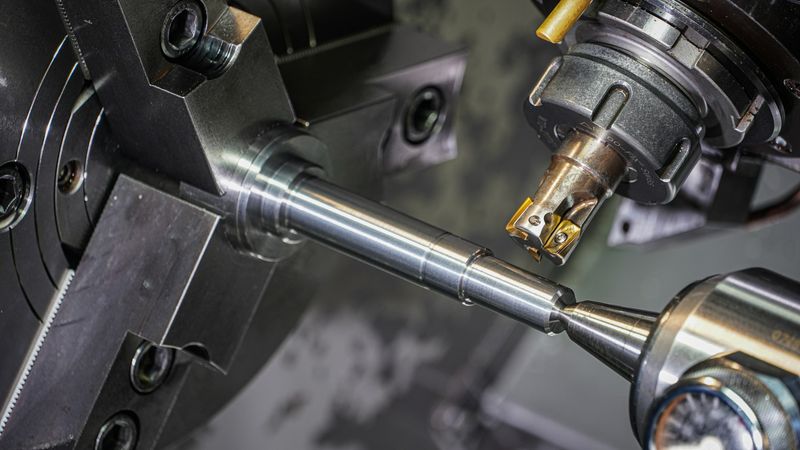How CNC Machining Accelerates Medical Device Manufacturing with Precision and Speed
Let’s explore how CNC machining accelerates medical device development by delivering exceptional precision, optimizing production efficiency, and ensuring regulatory compliance.

Photo by Sven Daniel on Unsplash
In medical device manufacturing, precision is not just a requirement—it’s the foundation of safety and performance. From diagnostic equipment to monitoring systems and surgical instruments, achieving high accuracy is essential. Among the various manufacturing methods, CNC machining has become indispensable for producing complex, high-precision components that meet the industry’s stringent demands. Let’s explore how CNC machining accelerates medical device development by delivering exceptional precision, optimizing production efficiency, and ensuring regulatory compliance.
I. Overcoming Key Challenges in Medical Device Manufacturing
Developing a medical device is a complex process—balancing tight tolerances, stringent regulations, and cost constraints demands precision at every step. Do these challenges sound familiar?
High Costs for Small Batches: Developing medical devices often involves low-volume runs during prototyping and early production stages. Conventional manufacturing approaches, with their high setup costs and tooling requirements, struggle to offer cost-efficient solutions for these smaller quantities.
Complexity in Precision Machining: The intricate designs and tight tolerances of medical components—such as thin-walled parts, internal cavities, and fine threads—demand exceptional precision. Achieving this consistency with traditional methods can lead to delays, rework, and increased expenses.
Balancing Compliance with Efficiency: Adhering to regulatory standards like ISO 13485 is essential but maintaining compliance while achieving fast lead times and controlling costs remains a challenge.
II. Why CNC Machining is a Game-Changer for Medical Device Development
CNC machining transforms the way manufacturers produce medical device components, offering unparalleled precision, flexibility, and cost-efficiency throughout the product lifecycle. These advantages are key to delivering high-quality medical products while meeting strict regulatory standards.
1. Multi-Dimensional Precision Control
CNC Machining provides exceptional accuracy and reliability through five key aspects:
Dimensional Precision: CNC Machining can achieve remarkable precision. At RPWORLD, the machining precision can meet DIN ISO 2768 M (F), ensuring the exact specification for medical devices.
Surface Finish: Surface roughness levels as low as Ra 0.4μm can be achieved, though this depends on various factors such as part geometry, material selection, and tooling strategies.
Repeatability and Consistency: CNC machining ensures that every part in a production run adheres to exact specifications, reducing variability and guaranteeing uniform quality.
Complex Geometries: CNC machining supports intricate designs, including narrow grooves, thin walls, and internal cavities. Additionally, employing design techniques—check design guidelines here—can further enhance manufacturability and maintain precision.
Stability Over Time: CNC machines are engineered for stable performance even during long production runs. This ensures that precision and quality do not degrade, making it possible to maintain strict and stable tolerances.
2. Production Flexibility
CNC machining supports quick, mold-free production, making it ideal for:
• Prototyping: Enabling faster design validation and iterations with high-quality prototypes.
• Small-Volume Production: Cost-effective for low-volume parts, allowing testing and refining without large-scale commitments.
III. Meeting Stringent Quality & Compliance Standards in CNC Machining
1. Medical Device Classification
Medical devices are classified into three categories based on their risk level and intended use. In the United States, the Food and Drug Administration (FDA) classifies medical devices into Class I, Class II, and Class III. In the European Union, medical devices follow a similar risk-based classification under the Medical Device Regulation (MDR):
Class I: Low-risk devices such as diagnostic tools, bandages, and surgical instruments. These devices generally require minimal regulatory control.
Class II: Moderate-risk devices including patient monitors, infusion pumps, and imaging equipment. These devices require additional regulatory oversight, including performance standards and post-market surveillance.
Class III: High-risk devices, typically implantable or life-supporting, which require pre-market approval.
2. The Role of ISO 9001: 13485
ISO 13485 is the gold standard for quality management in medical device manufacturing. It ensures consistent quality, regulatory compliance, and patient safety by maintaining traceability, robust inspection protocols, and adherence to global standards. RPWORLD’s ISO 9001: 13485 certification demonstrates a commitment to maintaining the highest standards in CNC machining processes.
IV. 5 Key Advantages of RPWORLD’s CNC Machining for Medical Device Manufacturing
Extensive Industry Experience and ISO 13485 Certification
Over 20 years of expertise and ISO 13485 certification ensure compliance and reliability in CNC machining solutions for medical devices.
Fast and Flexible Turnaround
With lead times as fast as 3 days, RPWORLD helps meet tight project deadlines and adapt quickly to design changes.
Precision and Compliance
Delivering high-precision components that meet DIN ISO 2768M (F) standards, ensuring the accuracy required for medical devices.
Advanced Post-Processing
Offering anodizing, plating, and laser engraving services tailored to medical needs, enhancing durability and functionality.
Versatile Material Options
Providing over 100 material choices, including medical-grade options such as PEEK and stainless steel, for diverse medical applications.